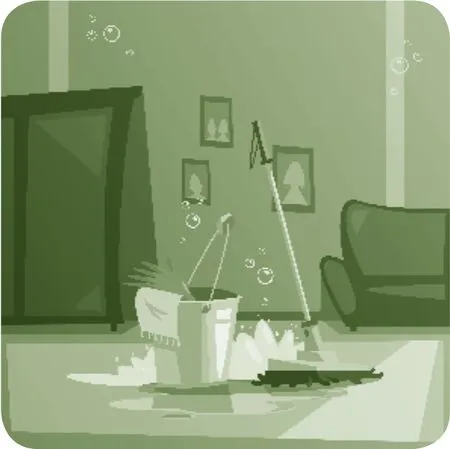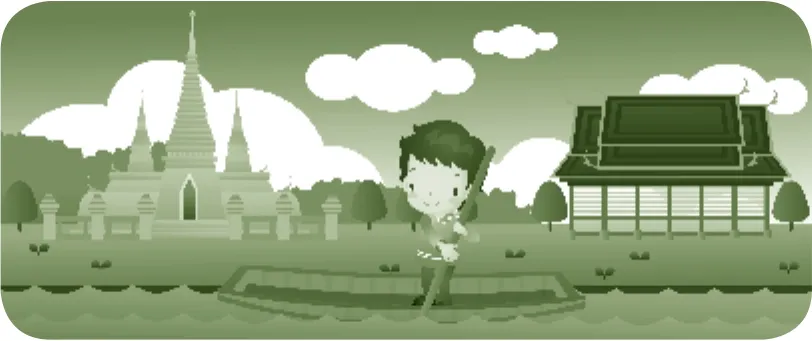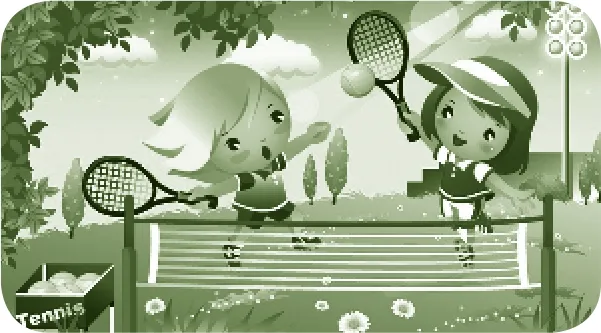玩转“四大金刚”
——详解英语句子的种类
2018-01-29陈传光供稿
陈传光供稿

英语句子按其用途可分为:陈述句、疑问句、祈使句和感叹句。我们暂且称之为“四大金刚”,这期我们就给同学们总结归纳一下。只要我们能熟练玩转这“四大金刚”,很多问题就能迎刃而解啦。
一、陈述句
陈述句是用来陈述或说明某一事实或某种观点的句子,包括肯定句和否定句两种。
【练习导航】
将下列句子改为否定句,每空一词。
1. He has already finished his homework.
He ________ ________ his homework ________.
2. She came here last week.
She ________ ________ here last week.
3. Lily seems to be ill.
Lily ________ ________ to be ill.
4. There will be a lot of tourists to our city in the future.
________ ________ be a lot of tourists to our city in the future.
5. My mother is washing the dishes in the kitchen.
My mother ________ ________ the dishes in the kitchen.6. You must clean your room now.
You ________ ________ ________ clean your room now.
【指点迷津】
肯定句变为否定句时要注意以下几点:
◆含有be动词、助动词、情态动词的肯定句变为否定句时,直接在上述动词后加not。当must作“必须”讲时,其否定形式应为don’t have to或needn’t。
◆含有行为动词的肯定句变为否定句时,要根据相应的人称和时态,借助助动词do/does/did+not进行改写。

二、疑问句
疑问句可分为一般疑问句、特殊疑问句、选择疑问句和反意疑问句。
【练习导航】
1. 按要求完成下列句子,每空一词。
(1) He has been to the Great Wall three times. (改为一般疑问句并做否定回答)
________ he ________ to the Great Wall three times? ________, he ________.
(2) I can answer this question easily. (改为一般疑问句并做肯定回答)
________ you ________ this question easily? ________, I ________.
(3) Tom often helps us. (对画线部分提问)
________ often ________ you?
(4) They often play basketball after school. (对画线部分提问)
________ ________ they often ________ after school?
(5) He has fifty books in his study. (对画线部分提问)
________ ________ books ________ he ________ in his study?
(6) Are you good at Chinese? (用English改为选择疑问句)
Are you good at Chinese ________ ________?

2. 完成下列反意疑问句,每空一词。
(1) He had milk and eggs for breakfast, ________ ________?
(2) Those are beautiful flowers, ________ ________?
(3) Mary can’t do it alone, ________ ________?
(4) Everybody can do it, ________ ________?
(5) There is a big tree in front of your classroom, ________ ________?(6) Something is wrong with your car, ________ ________?
(7) He is never late for school, ________ ________?
(8) Let’s have a rest, ________ ________?
(9) Don’t speak loudly in the library, ________ ________?
(10) I think millions of people know about Susan Boyle now, ________ ________?
【指点迷津】
◆一般疑问句
一般疑问句通常用yes或no来回答。陈述句变为一般疑问句时,如果谓语动词中含有be动词、助动词或情态动词,则直接把它们提到句首;如果谓语动词是行为动词,则根据人称和时态,在句首加Do、Does或Did,并将行为动词变为原形。
◆特殊疑问句
特殊疑问句是就句中某一部分进行提问的句子。疑问词包括what、who、whom、whose、which、when、where、why、how等。如果疑问词在句中做主语或主语的定语,疑问句的语序与陈述句语序相同,如:Who is playing the piano?(作主语)/Whose pen is missing(作主语的定语);如果疑问词在句中做其他成分,则用“疑问词+一般疑问句”结构。
◆选择疑问句
选择疑问句一般提出两种或两种以上的可能,问哪种情况属实。其结构可用一般疑问句或特殊疑问句,供选择的最后一个部分用or与前面的部分相连接。回答时不用yes或no,而是根据具体情况直接作答。
◆反意疑问句
反意疑问句由一个陈述句和一个附加问句组成。以下几点需特别注意:
(1) 如果陈述句的主语是表示事物的不定代词,附加问句的主语用it;如果是表示人的不定代词,附加问句的主语用he或they。
(2) 如果陈述句中有hardly、nothing、never、little、few、nobody、neither等表示否定意义的词,附加问句要用肯定形式。
(3) 祈使句的附加问句一般是在句尾加will (won’t) you,但以let’s开头的祈使句,其附加问句要用shall we。
(4) 如果陈述句是“I (don’t) think/believe/suppose/imagine +(that)引导的宾语从句”,附加问句的主语应与宾语从句的主语保持一致。
三、祈使句
祈使句是表示命令或请求的句子。它的主语是you(听话人),通常不说出。
【练习导航】
1. 根据汉语意思完成下列句子,每空一词。
(1) 我来帮你吧。
________ ________ help you.
(2) 我们休息一下吧。
________ ________ a rest.
(3) 让她走吧。
________ ________ go.
(4) 要永远记住那个可怕的日子。
________ ________ that terrible day.
(5) 务必告诉他这个消息。
________ ________ him the news!

2. 单项选择。
( ) (1) ________ this kind of peach, and you will like it.
A. To try B. Trying C. Try D. Tried
( ) (2) ________ the radio, please. The baby is sleeping now.
A. Not turn on B. Don’t turn on C. Not turn down D. Don’t turn down
( ) (3) —________ late for school again, Jim!
—Sorry, I promise that I ________.
A. Don’t; won’t B. Don’t be; won’t C. Don’t be; don’t D. Don’t; will
( ) (4) Boys and girls, ________ up your hands if you want to go for a picnic this weekend.
A. putting B. to put C. put D. puts
( ) (5) —Please bring your homework to school tomorrow, Jack.
—OK, I ________.
A. will B. won’t C. do D. don’t
【指点迷津】
◆肯定结构的祈使句常以谓语动词的原形开头。
◆否定结构的祈使句常在谓语动词的原形前加上Don’t。
◆以let引导的祈使句,有以下几种情况:
(1)“Let me+动词原形”,意为“让我……”。
(2)“Let’s+动词原形”,意为“让我们……”,表示建议或请求。
(3)“Let+第三人称作宾语+动词原形”,意为“让……”,表示愿望、命令或允许。
◆在开头的动词原形前加Do(务必)或Always(永远),表示强调。

四、感叹句
感叹句是用来表示喜怒哀乐等强烈感情的句子,通常由how或what来引导。
【练习导航】
1. 按要求完成下列句子,每空一词。
(1) These flowers are very beautiful. (改为感叹句)________ ________ these flowers are!
(2) It’s a funny story. (改为感叹句)________ ________ ________ story it is!
(3) They are running fast. (改为感叹句)________ ________ they are running!
(4) I have read a very interesting book. (改为感叹句)________ ________ ________ book I have read!
(5) What a good girl she is! (改为同义句)________ ________ the girl is!
(6) How delicious the food is! (改为同义句)________ ________ food it is!

2. 单项选择。
( ) (1) What a friendly person ________! We all like talking with him.
A. is it B. is he C. it is D. he is
( ) (2) ________ swimming in this river!
A. How great fun B. What great fun C. How a great fun D. What a great fun
( ) (3) ________ sad news it is! We must try our best to help them out of trouble.
A. What B. What a C. How D. How a
( ) (4) ________ lovely day! Let’s go for a walk.
A. What a B. What C. How a D. How
( ) (5) ________ man he is!
A. What strange a B. How a strange C. What a strange D. What strange
( ) (6) ________ the soup tastes!
A. How good B. How well C. What good D. What well
( ) (7) ________ interesting it is to swim in the sea!
A. How B. What a C. What D. How a
( ) (8) ________ great time we had last week!
A. How B. How a C. What D. What a
【指点迷津】
◆what通常修饰名词,引导的感叹句结构为:
1. What+a(n)+形容词+可数名词的单数形式(+主语+谓语+其他)!
2. What+形容词+可数名词的复数形式(+主语+谓语+其他)!
3. What+形容词+不可数名词(+主语+谓语+其他)!
◆how通常修饰形容词或副词,引导的感叹句结构为:
How+形容词或副词(+主语+谓语+其他)!


